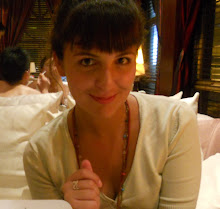At this time, I must humble myself and admit that my brain can’t process chords. As a clarinetist, I can handle one note at a time; but when I’m faced with two or more simultaneous notes, I’m completely hopeless. How did I make it through my music theory, ear training, and piano classes? With great diligence! I could force my brain to comprehend chords for a time, but it was very cumbersome, and mentally taxing, and in the end, the concepts didn’t stick.
This week I had to face my weakness full-on. Percussionist Lydia Bradshaw handed me some mallets, and I needed to play Mary had a Little Lamb on the Marimba, with an accompanying bass line. It was more than I could take. My rendition was more like ‘Bertha had a sickly gopher, who gnawed on human flesh.’ To hear this charming childhood classic, check out the video. Lydia is an incredibly talented musician, and you can read about her experience with mallet percussion in the interview below.
Interview
Tashina: When did you first start exploring percussion?
Lydia: I started playing when I was in 6th grade, Middle school, the beginning band in the mornings. But yeah, 6th grade, and then I played all throughout middle school and high school.
Tashina: You have a very musical family and you have diverse musical talents yourself; you could have chosen to specialize in any area of music, why did you choose percussion?
Lydia: Um, I don’t know! I just really liked how in percussion you can do a lot of different things. You play on different instruments. You don’t just play the flute all day long, or the saxophone. You know, you get to explore and do different instruments and learn all sorts of different techniques. Variety. That’s probably what I like the most about it.
Tashina: What is mallet/keyboard percussion, and what makes mallet instruments different from other percussion instruments?
Lydia: Mallet percussion is a lot like a piano. You have the xylophone, and marimba, and vibraphone and those sort of things. Yeah, they’re basically just a piano, and you hit it. But, they’re different from other percussion instruments because, not only do you have to focus on rhythm, but you have to focus on hitting notes. So they’re probably more like the other instruments in that way—you have to focus on being more musical as opposed to just playing rhythm.
Tashina: When I see a percussionist playing with two mallets in each hand, it seems like something that is crazy difficult. Is it as difficult as it looks? Is it a skill that takes a long time to master?
Lydia: It is pretty hard at first. Because, you know, you think two is hard enough just trying to hit the right notes; but then you put two in each hand, it’s a lot more coordination. It is a bit harder, but once you get used to it... I enjoy it a lot. I really do.
Tashina: When you’re playing in an ensemble, you need to be able to see your music, and where you’re at on the keyboard, and what the conductor is doing. How do you manage all that?
Lydia: Um, time, mostly. You have to be able to get to the point where you’re very comfortable playing on the instrument, so you can focus more on the music and the conductor, as opposed to where you are on the instrument and what notes you’re playing. You just have to get familiar with all the intervals and stuff on the instrument.





0 comments:
Post a Comment